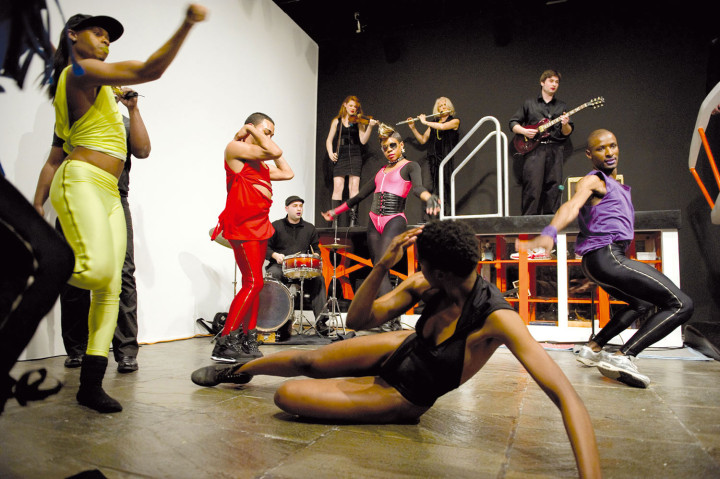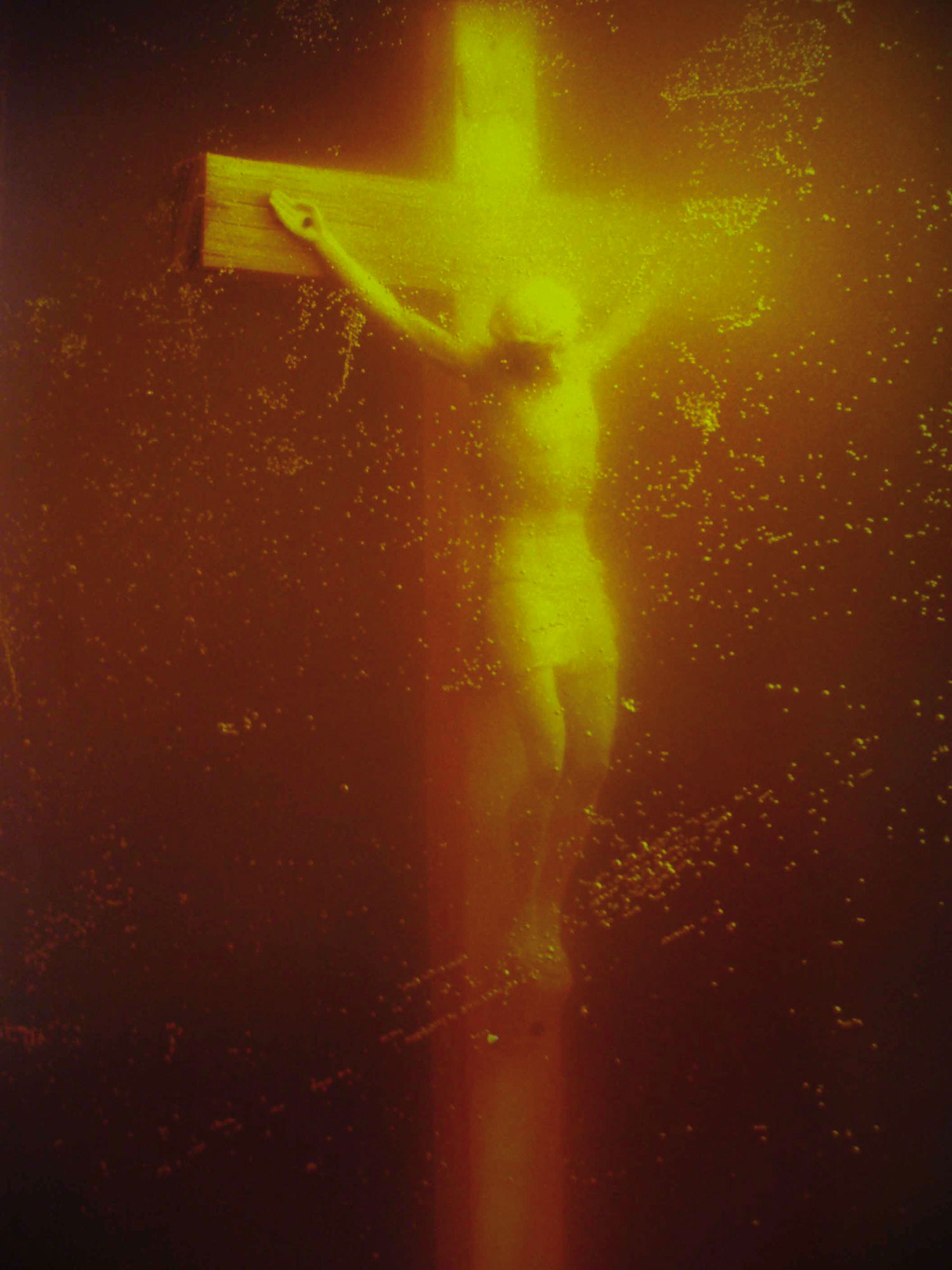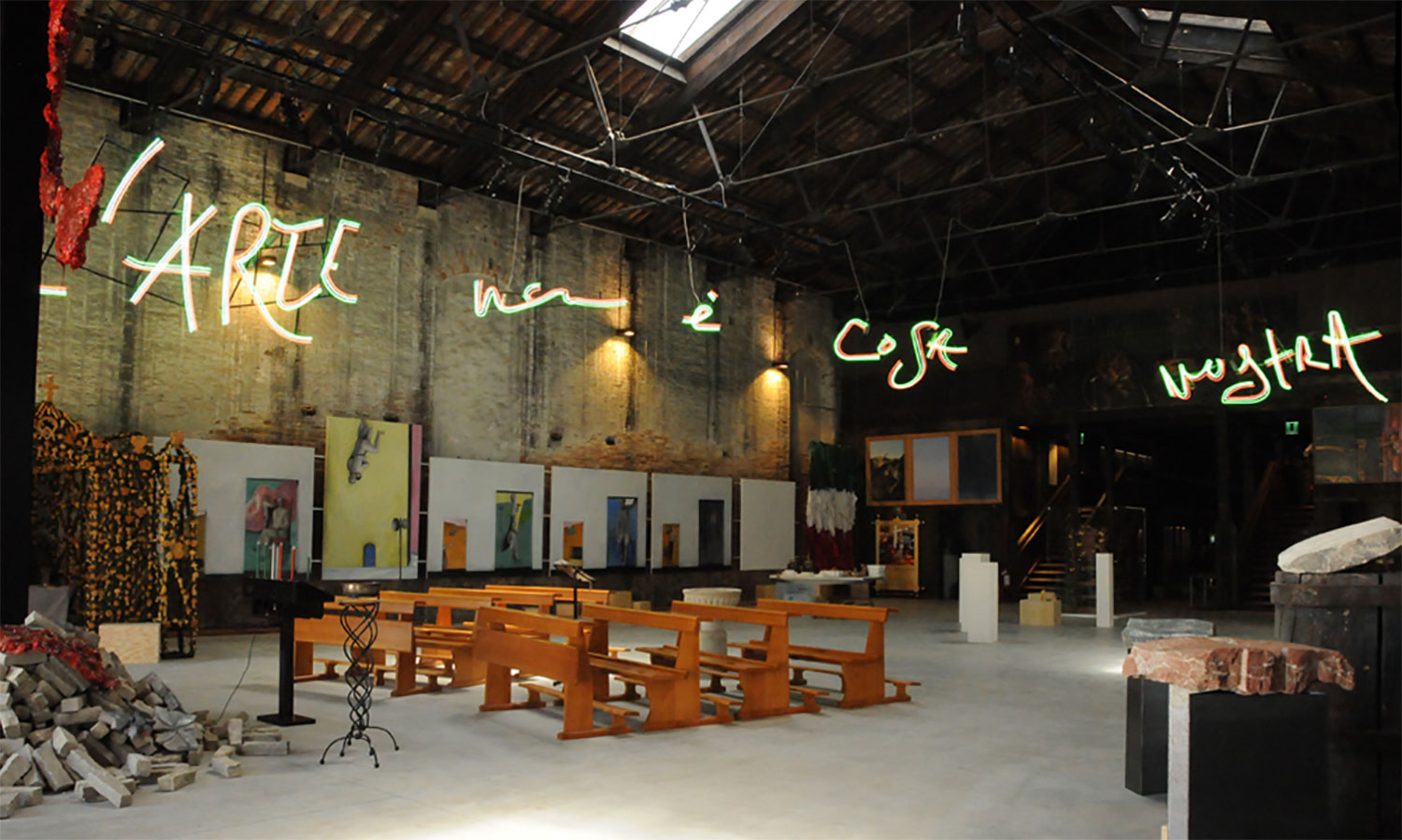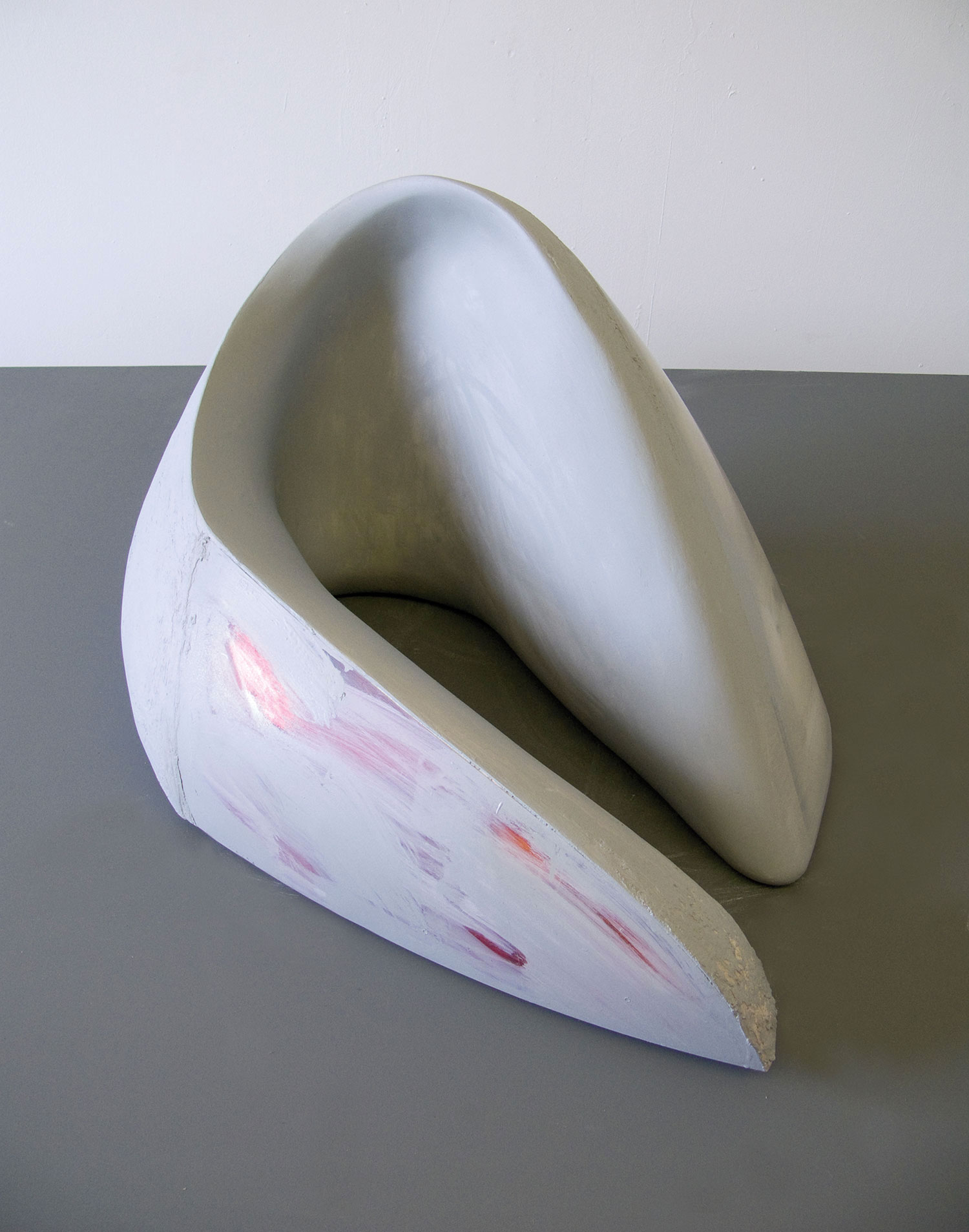
On several occasions, Christodoulos Panayiotou organized a kind of marathon that had little to do with the Greek original but was closer to an American tradition: slow dancing. In front of a crowd of onlookers, on little stages set out under a banner that read “Slow Dance Marathon,” different couples danced, one after the other, for 24 to 48 consecutive hours, forming a human chain to the tear-wrenching refrains of Lionel Richie, Bryan Adams and Whitney Houston. This collective performance in which every participant waited to experience a privileged moment of physical and emotional intimacy as well as a public representation of their love — in a manner akin to that of former countryside balls — is rooted in a long artistic tradition of fascination with folk dances and their symbolic and social dimensions. With a dose of humor, critical distance and empathy, Panayiotou, a trained dancer and theater performer, and therefore fully aware of the history and choreography of folk dance reveals contemporary bodies set in motion by the desire to be together, to be watched and to be touched. In his video Love is Overrated (2006), a staged interview featuring a critic of the slow dance phenomenon is accompanied by images of the deserted marathon, as if to suggest that once the body language of the participants has vanished, the desire for language (typical of those who do not dance) reawakens. Thus, a practice that has no aim other than itself become overanalyzed. Dance, as Giorgio Agamben puts it, reinstates the idea of art as a “pure possibility of moving,” an “integral policy,” a finality without end, more than any other artistic practice.¹ This is one of the reasons why both dancers and artists began borrowing from each other, well before the recent wave of works at the crossroads of their fields.
Another motivation for artists to work with dance stems from their renewed interest in common practices, beginning in the ’90s and ’00s, whether in the frame of relational aesthetics or the social turn. One particular phenomenon seems remarkable in the context of the first decade of the 21st century: artists-ethnologists focusing on the practices of folk dances that activate a desire to be together, a desire that has informed the history of modern and postmodern dance. Panayiotou, who studied sociology at university, positions himself precisely in this context where visual arts, anthropology and dance meet — at the very moment ethnochoreology is gaining momentum as a university discipline.²
The construction of a common world also encompasses the body, the moving body, as well as dance. In their quest to interrogate this constitution of a common world, artists are once more delving into the field of dance because “we dance, most of the time, so as to be together.”
Aby Warburg had the intuition that visual arts could be read as a “certain relation to the dances executed by bodies in almost all circumstances of their lives.”³ If we are to reconsider the recent evolutions of visual art in the light of this relation, exemplified by a number of works, we notice that artists often work on the tension between corporality and sociality, solitude and the desire for togetherness. These works create a link with the non-cultural aspects of dance, as well as choreographed dance and the renewal of theatricality (such as the works of Elad Lassry, Daria Martin, Kelly Nipper, and Spartacus Chetwynd and in exhibitions such as “While Bodies Get Mirrored” at the Migros Museum, Zurich, in 2010 or “Dance with Camera” at the ICA, Philadelphia, in 2009-2010.)

The desire for togetherness permeates numerous practices of modern and postmodern dance; one could say that they are inseparable. The visual arts, despite their fascination with dance, contributed very little — at least until the Bauhaus — to the creation of common worlds as initiated by a modern dancer like Rudolf Laban. This is because before artists began performing, the dimension of the common ritual remained outside artistic practices, while it has always been a pivotal element of the modernity of dance. Rudolf Laban, a painter by training who continued creating plastic works of art throughout his life, is mostly known as a teacher and theoretician of the moving body. One of his obsessions was to connect body and spirit in a dimension including a collective and cosmic vision. The problematics of community were at the center of his work at Monte Verità, in Canton Ticino (Switzerland), in the ’10s, as well as in his choral dances of the ’20s. His stay at Monte Verità — rediscovered and much commented upon by Harald Szeemann⁴— was less about the social body as a whole, but rather about a small community of artists. There, Laban developed, between 1911 and 1917, his ideas for a new pedagogy, influenced by a lifestyle comprising nudism, vegetarianism, eurhythmy, sexual freedom and a strong connection with nature.
Later, Laban envisioned his moving choirs as experimentations with a “community of living beings,” rather than mere representations. His mass dances, parades and processions were aiming to create a spiritual communion tending towards “the growth of their inner light.” This was the modern utopia, imbued with spirituality, itself tainted with the esoteric quest to constitute a common body. Laban pursued a return to ritualized dances in which everyone could take part through simple gestures, recovering the oneness of divided social bodies, as can be seen in a pageant of trade corporations he staged in 1929.
At the beginnings of postmodernism, dance remained the laboratory of this desire for the common, through ritualized practices emanating from reality and everyday life. This direction owes much to Anna Halprin, herself an heir to Bauhaus tradition, and whose work has strongly influenced the visual arts. The desire for togetherness, reaching its acme in the late ’60s and early ’70s, allowed for the emergence of a togetherness that went beyond the boundaries between dancers and the public, between San Francisco Caucasians and Los Angeles African-Americans, between men and women, such as in Ceremony of Us (1969). Although it remained concrete and well-anchored in reality, Halprin’s “communal work” was still influenced by a diffuse pantheism and a cosmic vision, which can be perceived in the setting of the dance deck at her San Francisco house, as well as in her pieces Circle the Earth (1988), Earthdance (1992) and Rituals on the Beach (1998).
These two moments, modern and postmodern, illustrate a desire for togetherness strongly tainted with utopia, while this notion gradually dissolved during the ’80s. Even Anna Halprin developed a more and more holistic and social work with her dance therapy and her desire to “heal the community” in the ’90s and throughout the first decade of the 21st century.
Visual artists turned their gaze toward dance because within it they recognized the possibilities of the integral politics that Giorgio Agamben mentioned, away from the post-human body of the ’90s, towards a dancing body with its rituals and popular culture. During the ’90s and ’00s there was a surge of works by plastic artists reconnecting with the ideas modern and postmodern dancers nourished towards the common world. This resulted in a specific tension between dance as both a possibility for togetherness and a moment of solitude — a paradox particularly apparent in many works of the ’90s.

One work by Rirkrit Tiravanija, Untitled (Shall We Dance) (1993), represents a discreet yet meaningful turn in this new history. In Gavin Brown’s New York gallery, Tiravanija invited couples to dance to music coming from a record player on a chair. With this piece, he questions, as he had already done in his first collective meals, the modalities of togetherness in the art field. Many works of this period depicted popular dance as a desire for togetherness referring to club culture and techno raves. Rineke Dijkstra’s video installation The Buzz Club, Liverpool, England/Mysteryworld, Zaandam, Netherlands (1996-1997), Andreas Gursky’s and Wolfgang Tillmans’ photographs as well as Mark Leckey’s video Fiorucci Made Me Hardcore (1999) all testify to this trend. In the white cube space of the gallery, Rirkrit Tiravanija’s work offered the possibility to take part in a ritual social moment that had become old-fashioned at a time when the techno wave was emerging. The work provided a moment of simplicity both revelatory of and contrasting its time by taking the opportunity to move together without any other aim.
At the same time, other major works of this period, in contrast, illustrated moments of solitude, of dance for one’s self, as can be seen in Dancing in Peckham (1994) by Gillian Wearing, Sam Taylor-Wood’s magnificent Brontosaurus (1995) or Felix Gonzalez-Torres’ “Untitled” (Go-Go Dancing Platform), 1991.
Since the end of the ’90s and up to the present, the works of visual artists using popular dance to address questions of community have taken on more social and ethnological tones. In 1997, Pawel Althamer created The Dancers, a work as emblematic as Rirkrit Tiravanija’s. It is an installation composed of five hanging plasma screens showing a group of naked homeless people, men and women, with tired, old and tattooed bodies, dancing in a circle, a theme particularly dear to Henri Matisse. This work, marked by both suffering and joy, gave life to the dance of the forsaken. Incarnating a contemporary version of Brueghel, Pawel Althamer, the shaman-artist, prepared the way for a community of anti-modern bodies, that stood in opposition to the aesthetical and hygienist ideology that came with modernity’s unveiling of the naked body. With this work, the artist, in a spirit pervaded with mysticism, mocks the naivety of the common utopia when confronted with diminished bodies.
The first decade of the 21st century saw the irruption of popular dance in the visual arts, yet with the artists in a more distanced position, as if they were delving into a sociological quest where dance practices linked communities together. Jeremy Deller was the first to place his work in the field of popular culture with Folk Archives (1999-2005), or his video about hip hop culture, Generation Ghetto (1999), on a musical score by Vodershow. More recently, in his video Massage the History (2007-09), Cameron Jamie portrays a group of young African-Americans dancing with extremely suggestive poses on and with the furniture in a typical affluent middle-class interior studded with family portraits. Fascinated by the worlds of drugs and trance music, Canadian artist Jeremy Shaw realized the video series “Best Minds” (2007-09), a bewitching dip into the world of a group of young American males dancing together in a trance-like state, constantly on the verge of violence. In his videos and performances, Rashaad Newsome similarly explores questions connected to social protocols and hierarchies — in works like Untitled (2008) and Five (2010) — such as the voguing phenomenon in the US gay scene, popularized by Madonna’s hit song “Vogue.”
In this environment where group dancing generates a deepened sense of solitude, as if groups were juxtaposing individuals with no connections, the work of Christodoulos Panayiotou positions itself as a melancholic experience of the desire to break away from inter-individual distance and discontinuity. He chose slow dancing, as he explains in the Love is Overrated conversation with Shiri Reznik about Slow Dance Marathon, precisely because everyone is able to dance this sort of anti-dance and because it enables the dancers to eradicate personal space, in opposition to more complex social dances. This quest that he led over a number of years, through different works, eventually generates a tension between the individual and the collective, in an intentionally emotional climate where dance mimics the desire for love. The beholders of Slow Dance Marathon, caught between their desire to take part and their position as voyeurs of the slow dance, are excluded from a dance that invites closeness yet also illustrates the impossibility of truly being close. It is not enough to be dancing together in order to create the common body dreamed-up by modernity, even if we keep dancing to be together.





